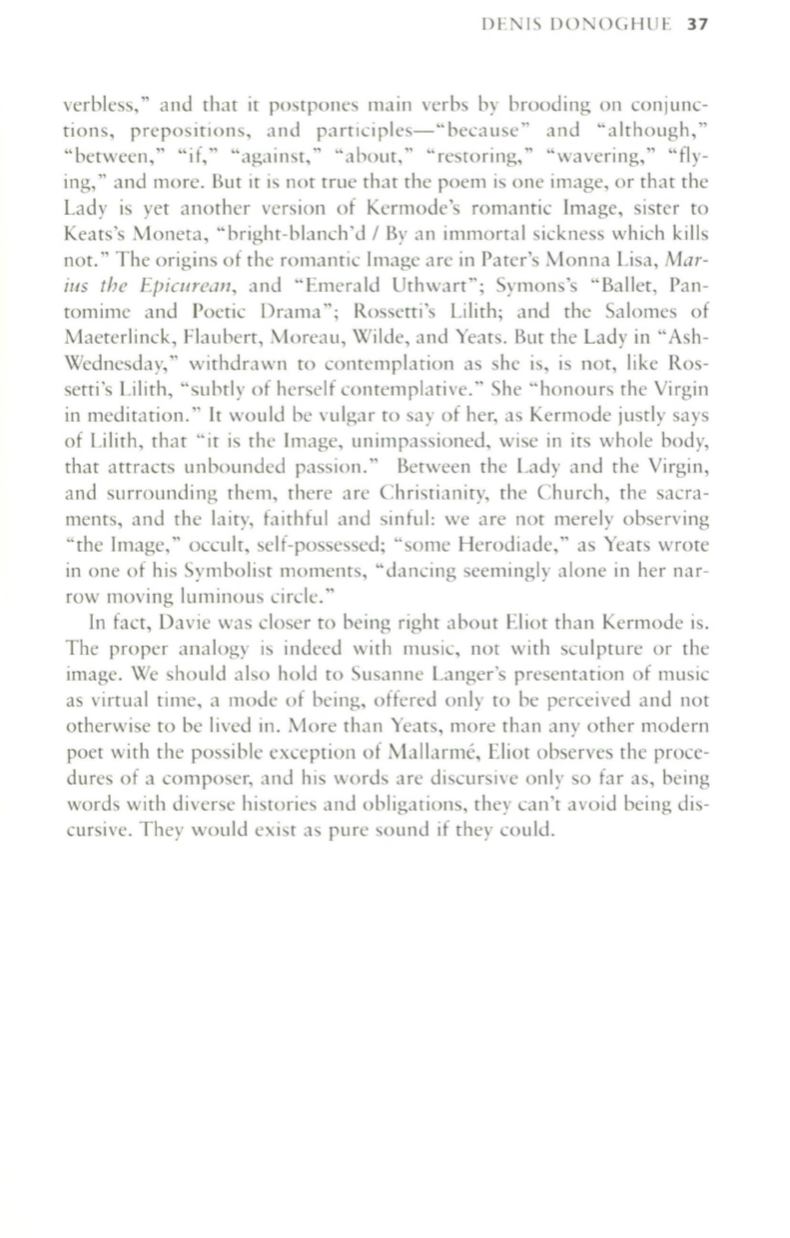
DENIS DONOGHUE
37
verbless," and that it postpones main verbs by brooding on conjunc–
tions, prepositions, and participles-" because" and "although,"
"between," "if," "against," "about," "restoring," "wavering," "fly–
ing," and more. But it is not true that the poem is one image, or that the
Lady is yet another version of Kcrmode's romantic Image, sister to
Keats's Moneta, "bright-blanch'd / By an immortal sickness which kills
nor." The origins of the romantic Image are in Pater's Monna Lisa,
Mar–
ius the Epicurean,
and "Emerald Uthwart"; Symons's "Ballet, Pan–
tomime and Poetic Drama"; Rossetti's Lilith; and the Salomes of
Maeterlinck, Flaubert, Moreau, Wilde, and Yeats. But the Lady in "Ash–
Wednesday," withdrawn to contemplation as she is, is not, like Ros–
setti's Lilith, "subtly of herself contemplative." She "honours the Virgin
in meditation."
It
would be vulgar to say of her, as Kermode justly says
of Lilith, that "it is the Image, unimpassioned, wise in its whole body,
that attracts unbounded passion." Between the Lady and the Virgin,
and surrounding them, there are Christianity, the Church, the sacra–
ments, and the laity, faithful and sinful: we are not merely observing
"the Image," occult, self-possessed; "some Herodiade," as Yeats wrote
in one of his Symbolist moments, "dancing seemingly alone in her nar–
row moving luminous circle."
In
fact, Davie was closer to being right about Eliot than Kermode is.
The proper analogy is indeed with music, not with sculpture or the
image. We should also hold to Susanne Langer's presentation of music
as virtual time, a mode of being, offered only to be perceived and not
otherwise to be lived in. More than Yeats, more than any other modern
poet with the possible exception of Mallarme, Eliot observes the proce–
dures of a composer, and his words are discursive only so far as, being
words with diverse histories and obligations, they can't avoid being dis–
cursive. They would exist as pure sound if they could.


